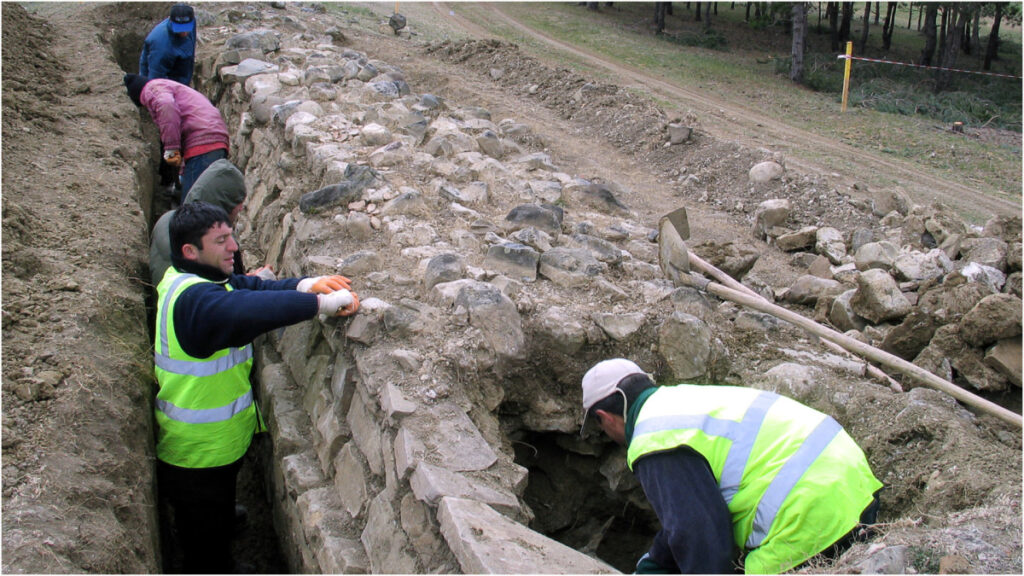
Archaeologists have unearthed a 1.8 million-year-old human jawbone at a dig site in Georgia, offering new insights into the lives of ancient humans. The discovery was made by the Orozmani Paleoanthropology & Archaeology Field School, which shared a video of the find on its Instagram page in late July. The jawbone, attributed to an early species of human, was found at an “early Stone Age site” located approximately 100 kilometers south of Tbilisi, the capital of Georgia, according to the Archaeology Institute of America.
The significance of the Orozmani site is underscored by its potential to enhance our understanding of ancient human presence in the Caucasus region. Researchers are examining artifacts from various Georgian dig sites to explore potential interactions between Anatomically Modern Humans (AMH) and Neanderthals. A 2025 study published in Quaternary Science Reviews suggests that new chronological data could reignite discussions on these interactions.
Orozmani: A Treasure Trove of Ancient Insights
The Orozmani site has been a focal point for archaeological excavations since 2019, revealing a wealth of Early Pleistocene fossils and stone tools. According to the Archaeology Institute of America, these findings provide crucial insights into human activity in the region around 1.8 million years ago. Giorgi Bidzinashvili, a professor of stone age archaeology at Ilia State University in Georgia, emphasized the site’s importance, stating, “The study of early human and fossil animal remains from Orozmani will allow us to determine the lifestyle of the first colonizers of Eurasia.”
In addition to the jawbone, the site has yielded a human tooth, as well as remains of various prehistoric animals, including a saber-toothed tiger, elephant, wolf, deer, and giraffe. A collection of stone tools was also discovered, further enriching the archaeological narrative of the region.
Historical Context and Broader Implications
The Orozmani site is situated close to Dmanisi, one of the most renowned prehistoric sites in Eurasia, known for the earliest Hominin remains outside Africa. This proximity highlights the significance of Orozmani in understanding the migration and evolution of early human species. Excavations in 2021 uncovered a “4th premolar tooth of a hominin mandible” in the Lower Pleistocene layer, adding to the site’s extensive fossil record.
Other notable discoveries at Orozmani include:
- An H. erectus fossil
- Hundreds of prehistoric animal bones
- Dozens of stone artifacts
Further exploratory surveys conducted between 2021 and 2022 revealed an extension of fossil-rich sediments, suggesting that the archaeological site could span thousands of square meters. This expansive area underscores the site’s potential to provide unprecedented insights into early human life and migration patterns.
Future Directions and Research Opportunities
The ongoing research at Orozmani is poised to reshape our understanding of early human history in Eurasia. As excavations continue, scientists hope to uncover more artifacts that could clarify the interactions between different human species and their environments. The findings at Orozmani not only contribute to the broader narrative of human evolution but also offer a glimpse into the complex tapestry of life that existed millions of years ago.
As researchers delve deeper into the rich archaeological deposits at Orozmani, the site promises to remain a vital source of information for understanding the origins and development of early human societies.






